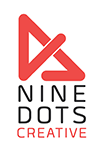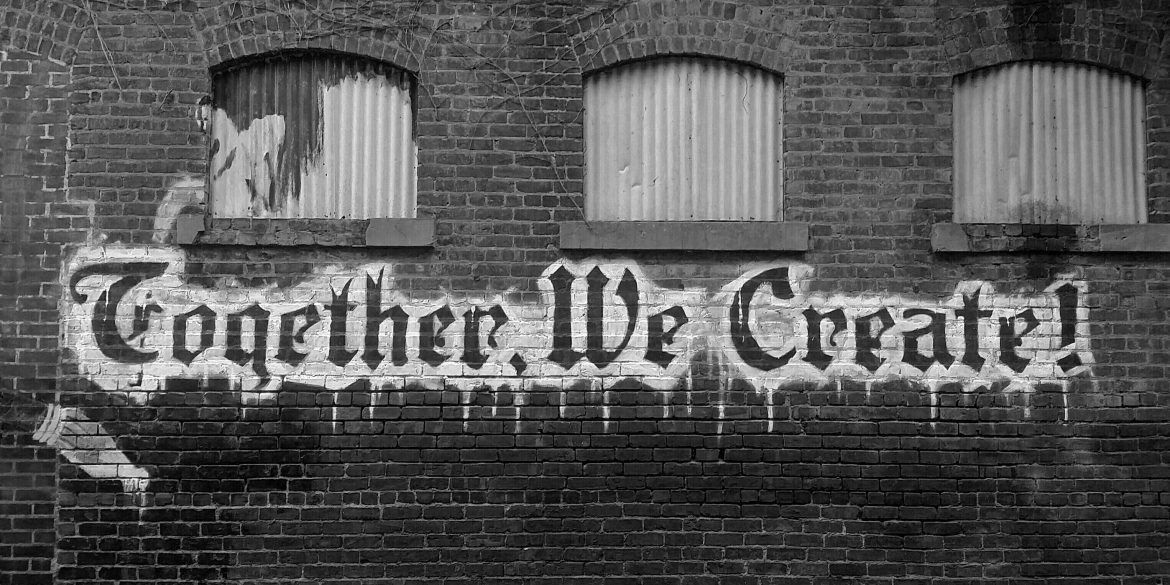My 8 point design process for brand identity
In one of my previous posts, “Your first time with a designer”, I promised I would give some insight into the design process. If you’ve never worked with a designer before, this can be really handy to know. It’s good to know what to expect and when to expect it.
In this post I will address one of the first, and often most exciting, things you will want to get for your business. An identity. Specifically a visual identity. These are the 8 steps you should expect to have to follow for a good result.

1: Writing a brief
In order to get the best possible outcome from your branding project, you need a brief. The more in-depth the brief, the better the outcome. Simply picking a designer out of a hat and telling them you need a logo for your new venture is not going to work. Who is your audience? How do you want them to perceive your business? What are your company values? What makes you different to your competitors? How do you want your business to sit within the market?
You know more about your business than anyone else. This knowledge needs to be conveyed to the designer in order for the final outcome to be successful.
Your visual brand isn’t just your logo (and your brand isn’t just the visuals, but that’s an entirely different post). You need to consider everything you will need. Colours, fonts, logo, icons, illustrations, social media graphics, signage, stationary… the list goes on.
To help clients out who haven’t written a brief, or not a very thorough brief, I send them this questionnaire. This serves two purposes for me: if a client is simply fishing for the cheapest price, they’re unlikely to fill this in. Bonus: I’ve filtered out a potential red herring. If the client does fill it in, I’ve got a fairly decent brief to work from. More questions can always be asked if needed.
And finally — know your budget. An indication of this will be important. Prices between large agencies, freelancers and everything in between can vary massively, and this will help you with the next point.
Little tip:
Make sure you request your logo is created as a vector. Too many times people have used sub-par designers who have created logos at a set size in photoshop, only to find that they cannot use it above a certain size. They’ve then had to seek out help in getting their logo converted so it can be used at the size they require.
2: Finding a designer
The best way to find a designer is through recommendations. If someone you know has worked with a company/designer for their branding project and they were happy with it (and you think it’s great), then don’t be afraid to ask! If, however, you don’t know anyone who can provide a recommendation, all is not lost.
As suggested in the first point — know your budget. A freelancer will be less costly than a large agency, but an agency do have a whole team of people there if your project is something ‘big’. Bridging the gap between these two options, there are collectives such as Nine Dots Creative (I know, cheeky plug), who can provide both the cost efficiency of using a freelancer but also the ‘team of people’ aspect of an agency.
Once you have an idea of who you need to be approaching, search for local freelancers/companies. Why local? It’s great to be able to meet up with the person working on your brand. Getting along with your designer is really beneficial to your business, great relationships can be forged and they can become a real asset. View their online portfolios, see what kind of companies they have worked with in the past. Make a shortlist of those you like the look of. Contact them and arrange meetings if possible. Eventually you should get the shortlist down to just one you would like yo go with. Provide your brief, get a price, find out their availability. Hopefully then you can move onto point 3…
3: Signing a contract
Some might call it a contract, others might call it a service level agreement. Whatever it’s called, you should expect to sign something at the beginning of the project which outlines what work will be undertaken. This should include a timeline for things to be provided, a cost, and an agreed payment schedule. At this point I ask the client for 50% payment up front. In my contract it is stated that the remaining 50% is payable upon completion of the project and before any final artwork is provided to the client. You may find slight variations on this, but this way of working is pretty standard. Make sure you read everything thoroughly and any changes you require are made to the agreement before you sign.
If a designer does not provide a contract, it may well be in your benefit to ask for one. They’re not just there to protect the designer, but you too. Even if the designer has come with a recommendation, even if the designer is your own brother (in fact, ESPECIALLY if they are friends/family. You wouldn’t believe the stories I have heard.)… I’d always recommend having a contract.
4: Beginning work
Now all the formalities have taken place, it’s time for the creative work to begin. It’s probably best I explain this part in terms of what I do:
I usually have a good re-read of the brief and start sketching ideas out for a logo (the first thing I’ll do on a branding project). After sketching out hundreds of ideas and variations on those, I’ll whittle it down to maybe 20 or so to take onto screen. From there, I’ll keep playing and whittling down until get to 3 options. These options will be in black and white only. Colour comes later. Three options are provided, with a rationale for each, for the client to choose from.
Once the client has chosen one of the three options (perhaps with a tweak or two if requested), I apply colour. I provide 3 brand colour pallette options. Each option will has a set of colours (usually 2 primary colours and 3 secondary). Each is applicable to the company and it’s values, core audience etc. (all things learned from the brief). Again, I provide these three colour options to the client for them to choose from.
Following that choice being made I move onto a similar process with all other brand assets that have been requested. Fonts, icons, graphics, illustrations etc.
Finally, once all the assets have been chosen, I create the brand guidelines. This is a document anywhere between 4 and 20 pages (depending on the size of the project). It serves as a reference for anyone ever needing to create something for your business. The document can be provided to web developers, PR consultants, advertisers, marketing consultants — anyone who might need to create something visual for the company. It includes do’s and don’ts for logo usage, specific values (RGB, CMYK, HEX) for the brand colours, font guidance and lots more.
5: Signing off
This is something which should be done incrementally throughout the project, but definitely at the end. Every time an asset is created and chosen (be that logo, icon, graphic), it should be signed off. It is good to keep this all on record via email. For the designer, it prevents the client coming back for further work that was never agreed in the contract. For the client, it keeps the entire process well organised and means they will receive the correct files at the end.
Final sign off should mean exactly that. Once you are happy with something and you have signed it off, requesting further changes may incur a further cost.
At this point, the designer can invoice you for the final payment.
6: Receiving files
In your agreement it should state that you will receive all artwork (and rights of use) once final payment has been made. You should expect to receive a zip file containing all assets in varying formats. These formats should include vector files (as mentioned in point 1, the format any logo should really be created in), screen resolution (72dpi) jpgs/pngs for screen use, high resolution (300dpi) jpgs/tiffs for print use, black and white versions of logos/graphics, and any other formats/sizes you have specifically requested.
At this point I always say that should any other format/size be required I am happy to provide at any date in the future.
Little tip:
Signing up to a service such as Dropbox or Google Drive will help in the sharing of files. You can simply create a folder for all your branding assets to live, and it keeps your email servers a lot lighter. If a designer sends you an invite to such a service, but you use another, just let them know!
7: Using your branding
Now it’s time to apply all those lovely visual brand identity assets to everywhere you have a presence — both online and offline. Consistency is key. Take note of how your logo should and should not be used (this should be in your brand guidelines booklet). Only use imagery which aligns with your companies identity and speaks to your audience. Don’t pick things because YOU like them — put yourself in the mind of your customer and do stuff that will speak to THEM.
A lot of small business owners get really attached to their business and quite often forget that it’s not about them, it’s about their customer. Trust that your designer will have put a lot of thought and research into this. The minute you start veering away from the guidance they’ve given you, is the minute your brand starts to be watered down. It will start to loose it’s true identity. It will begin to fade into the background of your audiences consciousness.
Solving issues
If you find you have any issues with any of the files you have been provided — don’ be afraid to ask your designer! I know I’m always willing to provide a helping technical hand, especially to those just starting out and to whom everything may be very new!
8: Keeping that relationship going…
If the project has gone well, keep in touch. It’s unlikely that you’ll never need your designer again. You might need some adverts creating, booklets, catalogues or technical documents. You might need something that they can’t offer… but I’ll bet they’ll know someone who can.
I wish you the best in your design ventures and I hope this has demystified an often unknown process to newbies.

